Flight Lines
Print on cloth, with embroidery, various threads, cotton, metallic, rayon
269× 7.2 × 804 cm
2022
Moon
Synthetic fabric, wood and plastic fixings, plastic inflation pipe (to be filled with helium on site at installation)
approx. 3m radius and depth once inflated
2018
This newly conceived work recognises the reciprocal relationship between humanity and our surroundings. The contemporary imperative forces us to acknowledge the importance of understanding ancient wisdom that explore the balance of human interaction with our planet. We look at what is near, what is local as indicative of what is shared and of global consequence and impact.
The work Flight Lines is both a reference to the proliferation of global connections made possible through manned flight and aims to contribute to rich dialogues between cultural sites and experiences. Simultaneously these aeroplane flights (portrayed in the work from left to right) are implicated in unequivocal damage to the climate. The work references the natural world, presenting a flock of birds that migrates from right to left across the work towards the moon hovering above. The flight of birds responds to the seasonal shifts, the changes of atmospheric and climatic conditions, whereas human flight is constant and relentless. The work asks us to negotiate these tensions and relationships as interconnected part of rebalancing the interaction between human and non-human agents. The work expands our ideas about being “in common”, cooperative ventures, sharing spaces that are expansive and universal. The Moon asks us to look up, to be aspirational, to create change.
Textile and embroidery offer a conceptual way to address this subject.
Steeped in the history of trade routes with its global connections to production and pattern, it is both a shared language in process and imagery but equally distinct in its production and iconography. The migration of textiles and its patterns are bound into our global and local histories. Stitching has a capacity for remaking, connecting, repairing, and joining, symbolically, metaphorically, and physically. It acts as a common connecting one world language.
The work also sees a change in production which marks the beginning of the seismic shift in the use of studio & fabrication resources, a critical contributor to climate change. As an artist with an established practice using material resources, this work is the beginning of a process of working more sustainably. The print process is being considered in the light of reducing the chemical content, and the threads used are only those which are already owned by the artist. The energy/electricity used to make the work is solar. This process of reconsidering materials will impact fundamentally my work going forward. This work marks a commitment to a process of accelerating sustainable material use.
Flight Lines alludes and adds to the previous installation Thread Bearing Witness. This installation concerned people’s displacement and migration in relation to universal sites, Ground, Sea and Sky. The focus of Flight Lines is the sky and the relationship between humanity and place that is defined through sky, a universal enfolding movement of climate, wind currents and atmosphere. The work takes equilibrium and negotiation as terms of reference, where the impact of one agent is poised against another. Flight Lines uses the format of Thread Bearing Witness, a monumental textile panel, which through its expansive form, promotes an epic narrative subject. Alongside Flight Lines is Moon from the original TBW presentation, showing the universality of subject and the overarching presence of the cosmic. In this presentation Moon represents the cyclical movement and seasonal shifts that dictate human and non-human activities.
Flight Lines
Print on cloth, with embroidery, various threads, cotton, metallic, rayon
269× 7.2 × 804 cm
2022
Moon
Synthetic fabric, wood and plastic fixings, plastic inflation pipe (to be filled with helium on site at installation)
approx. 3m radius and depth once inflated
2018
This newly conceived work recognises the reciprocal relationship between humanity and our surroundings. The contemporary imperative forces us to acknowledge the importance of understanding ancient wisdom that explore the balance of human interaction with our planet. We look at what is near, what is local as indicative of what is shared and of global consequence and impact.
The work Flight Lines is both a reference to the proliferation of global connections made possible through manned flight and aims to contribute to rich dialogues between cultural sites and experiences. Simultaneously these aeroplane flights (portrayed in the work from left to right) are implicated in unequivocal damage to the climate. The work references the natural world, presenting a flock of birds that migrates from right to left across the work towards the moon hovering above. The flight of birds responds to the seasonal shifts, the changes of atmospheric and climatic conditions, whereas human flight is constant and relentless. The work asks us to negotiate these tensions and relationships as interconnected part of rebalancing the interaction between human and non-human agents. The work expands our ideas about being “in common”, cooperative ventures, sharing spaces that are expansive and universal. The Moon asks us to look up, to be aspirational, to create change.
Textile and embroidery offer a conceptual way to address this subject.
Steeped in the history of trade routes with its global connections to production and pattern, it is both a shared language in process and imagery but equally distinct in its production and iconography. The migration of textiles and its patterns are bound into our global and local histories. Stitching has a capacity for remaking, connecting, repairing, and joining, symbolically, metaphorically, and physically. It acts as a common connecting one world language.
The work also sees a change in production which marks the beginning of the seismic shift in the use of studio & fabrication resources, a critical contributor to climate change. As an artist with an established practice using material resources, this work is the beginning of a process of working more sustainably. The print process is being considered in the light of reducing the chemical content, and the threads used are only those which are already owned by the artist. The energy/electricity used to make the work is solar. This process of reconsidering materials will impact fundamentally my work going forward. This work marks a commitment to a process of accelerating sustainable material use.
Flight Lines alludes and adds to the previous installation Thread Bearing Witness. This installation concerned people’s displacement and migration in relation to universal sites, Ground, Sea and Sky. The focus of Flight Lines is the sky and the relationship between humanity and place that is defined through sky, a universal enfolding movement of climate, wind currents and atmosphere. The work takes equilibrium and negotiation as terms of reference, where the impact of one agent is poised against another. Flight Lines uses the format of Thread Bearing Witness, a monumental textile panel, which through its expansive form, promotes an epic narrative subject. Alongside Flight Lines is Moon from the original TBW presentation, showing the universality of subject and the overarching presence of the cosmic. In this presentation Moon represents the cyclical movement and seasonal shifts that dictate human and non-human activities.
Flight Lines
Print on cloth, with embroidery, various threads, cotton, metallic, rayon
269× 7.2 × 804 cm
2022
Moon
Synthetic fabric, wood and plastic fixings, plastic inflation pipe (to be filled with helium on site at installation)
approx. 3m radius and depth once inflated
2018
This newly conceived work recognises the reciprocal relationship between humanity and our surroundings. The contemporary imperative forces us to acknowledge the importance of understanding ancient wisdom that explore the balance of human interaction with our planet. We look at what is near, what is local as indicative of what is shared and of global consequence and impact.
The work Flight Lines is both a reference to the proliferation of global connections made possible through manned flight and aims to contribute to rich dialogues between cultural sites and experiences. Simultaneously these aeroplane flights (portrayed in the work from left to right) are implicated in unequivocal damage to the climate. The work references the natural world, presenting a flock of birds that migrates from right to left across the work towards the moon hovering above. The flight of birds responds to the seasonal shifts, the changes of atmospheric and climatic conditions, whereas human flight is constant and relentless. The work asks us to negotiate these tensions and relationships as interconnected part of rebalancing the interaction between human and non-human agents. The work expands our ideas about being “in common”, cooperative ventures, sharing spaces that are expansive and universal. The Moon asks us to look up, to be aspirational, to create change.
Textile and embroidery offer a conceptual way to address this subject.
Steeped in the history of trade routes with its global connections to production and pattern, it is both a shared language in process and imagery but equally distinct in its production and iconography. The migration of textiles and its patterns are bound into our global and local histories. Stitching has a capacity for remaking, connecting, repairing, and joining, symbolically, metaphorically, and physically. It acts as a common connecting one world language.
The work also sees a change in production which marks the beginning of the seismic shift in the use of studio & fabrication resources, a critical contributor to climate change. As an artist with an established practice using material resources, this work is the beginning of a process of working more sustainably. The print process is being considered in the light of reducing the chemical content, and the threads used are only those which are already owned by the artist. The energy/electricity used to make the work is solar. This process of reconsidering materials will impact fundamentally my work going forward. This work marks a commitment to a process of accelerating sustainable material use.
Flight Lines alludes and adds to the previous installation Thread Bearing Witness. This installation concerned people’s displacement and migration in relation to universal sites, Ground, Sea and Sky. The focus of Flight Lines is the sky and the relationship between humanity and place that is defined through sky, a universal enfolding movement of climate, wind currents and atmosphere. The work takes equilibrium and negotiation as terms of reference, where the impact of one agent is poised against another. Flight Lines uses the format of Thread Bearing Witness, a monumental textile panel, which through its expansive form, promotes an epic narrative subject. Alongside Flight Lines is Moon from the original TBW presentation, showing the universality of subject and the overarching presence of the cosmic. In this presentation Moon represents the cyclical movement and seasonal shifts that dictate human and non-human activities.
Stitch A Tree
Cotton and various fabrics with various threads, cotton, metallic and rayon
560 x10 x 1100 cm
2019/2022
This associated huge textile work was conceived as a public participation artwork. It invited the contribution of stitched trees to create a collective “forest”that expressed support and unity for displaced and marginalized peoples. It is a one-world view of togetherness and mutuality.
The work includes over 6,000 or more trees while another version has been made by expert embroiderers in Karachi, Pakistan. The work celebrates extraordinary skills and the distinct styles and stitches of indigenous embroidery and reflects the distinct identity of place and people from around the globe and the importance of the contribution made by the embroiderers to cultural, economic and social life. In the “forest” we come together as one community, using stitch to unify us in a shared language of making.
The Stitch a Tree project was inspired by the Refugee Resilience Collective, who drew on Gillian Hughes “Tree of Life”, a strength-based narrative therapy tool which uses the tree as a creative metaphor on which people are invited to map out their lives, from root to the fruits; from cultural histories to future dreams.
A few days before the 2022 International Women's Day and China Arbor Day, Zhejiang Art Museum and Hangzhou Triennial of Fiber Art worked together with City Link of Dushi Kuaibao(Urban News Express)to invite citizens to take public participation in the artwork program “A Special Arbor Day—Stitch a Tree”.
Starting from the spring in 2022, we invited every citizen in Hangzhou to participate in the stitching of trees and be a part of Alice Kettle's art project. All the stitching trees will be exhibited in the 4th Hangzhou Triennial of Fiber Art. Each stitching tree will be collaged together to form a collective forest and meet other “forest” Alice Kettle made in different places of the world.
Kettle uses sewing as a powerful tool, creating a common language across generations, cultures and diverse groups. “By making a simple stitch, we create a strong shared message.”
Artistic directer: Alice Kettle
Organizer of public education in Hangzhou: Gu Wenjia, Li Wen
Executive of public education in Hangzhou: Jiang Huailiying
Assistant of public education in Hangzhou: Wu Mufan, Li Yuan, Chen Yiqiu










